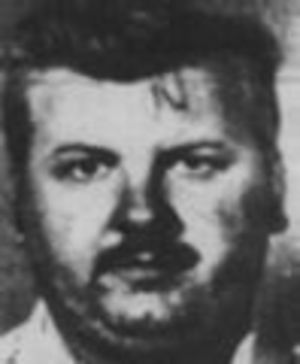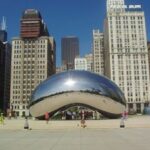The scene was truly horrific. The young bodies of Bobby Peterson and brothers John and Anton Schuessler were discovered bound and naked with their eyes taped closed in Robinson Woods on a crisp Autumn day in October of 1955. All three boys had died from asphyxiation. It was a gruesome crime, three young boys so harshly murdered and then discarded in the woods. It was the worst crime Chicago had seen in a long time. Detectives were stumped as to who could have killed the boys. No substantial evidence was ever found, not even the clothing of any of the three boys. The case would remain unsolved for a full forty years.
At one point the investigation took an interesting turn when a detective on the case speculated that the boys had rendezvoused at a downtown building briefly where they met up with JohnWayne Gacy, the killer clown spawned in the city of Chicago, who is now perhaps considered to be the most notorious and infamous American serial killer of all time. Most true crime buffs are likely familiar with the case of John Wayne Gacy and the gruesome nature of his crimes that included sodomy, rape, and murder. Over the course of about six years Gacy raped and killed at least thirty-three young men. He would be convicted of all thirty-three murders. At the time, no one else in the entire country had ever been convicted of so many homicides. But before Gacy could be charged with all those crimes, evidence had to be gathered. Detectives had the daunting task of excavating Gacy’s property. They found bodies in the basement in the tiniest of spaces. They found bodies buried under the garage, and they even discovered a body cemented into the back patio. Gacy had stashed bodies everywhere imaginable. He even kept the corpses of a few victims under his bed for several days before deciding on where to bury the bodies. His was truly a house of horrors.
As it turns out, John Wayne Gacy was only a teen at the time these three murders were committed and, so far as anyone knows, had not yet become the hideous monster who would molest and kill dozens of young males before stashing their remains in the crevices of his basement. Coincidentally, John Wayne Gacy happened to live only a few blocks from John and Anton Schuessler’s house at the time, but it was never really known whether they had all been acquainted. The detective first made the connection between Gacy and the three murdered boys when they were reportedly seen hanging around the Garland Building on the day of their disappearance, a place frequented by Gacy that happened to be a local hot spot for gay men to meet up with one another. Researcher and author Richard Linberg first disclosed this revelation about a possible connection between John Wayne Gacy and the missing boys. But a brief five to ten minute interval when all four males might have simultaneously been in the lobby of the downtown Garland building was all there was to the story and Gacy would have no further involvement in the case.
Forty years would pass before the murders of John and Anton Schuessler and Bobby Peterson would be solved. Were it not for an informant revealing the identity of the boys’ killer the case might never have been solved. But in 1995 there was such an informant who had been speaking to police about another case, that of a missing heiress to the Brach’s candy company. For one reason or another, the gentleman ended up implicating another man in the case of the Schuessler-Peterson murders that had occurred forty years prior. The information provided by this informant would lead to the arrest and conviction of the boys’ seditious killer and the families of the two boys would finally have closure.
So what exactly happened to the Schuessler brothers and Peterson boy? On the day they disappeared, the three boys had traveled downtown to the Chicago Loop where they intended to see a movie. Later, after leaving the theater they briefly stopped inside the Garland building lobby, where they may or may not have chatted with John Wayne Gacy. From there the boys headed over to a nearby bowling alley where they hung out for a while before departing for yet another bowling alley. It is believed that the three boys tried hitching a ride shortly after leaving the last bowling alley, a ride that would perhaps seal their fates. According to the police informant who had spilled the beans about a possible suspect in the murders, the killer had actually bragged to several people about the crime. The guilty party worked in the stables of a horse breeding operation at the time and convinced the three boys to accompany him there to check out the horses. Once there, he would molest and kill all three boys, one at a time, much as John Wayne Gacy the killer clown would eventually do to his unsuspecting future victims. The bodies of the three boys were subsequently ditched in Robinson Woods, close to where the Des Plaines River runs through. The horse stables were then burned down to eliminate any evidence, purportedly by the owner of the stables. Prior to being arrested for the Schuessler-Peterson murders, the accused allegedly coerced other young males into participating in bizarre sexual encounters by threatening they might end up like the Schuessler brothers or Bobby Peterson if they didn’t cooperate. Even with only circumstantial evidence the case was a slam dunk and forty years after the horrific murders of John and Anton Schuessler and Bobby Peterson, the killer would finally be brought to justice. Incidentally, John Wayne Gacy was executed by lethal injection in 1994.
References:
Brooks, Rachel. Chicago Ghosts. Atglen, PA: Schiffer Publishing, 2007.
Lindberg, Richard. Return to the Scene of the Crime: A Guide to Infamous Places in Chicago. Nashville, Tennessee: Cumberland House, 2001.
Taylor, Troy. Haunted Chicago: History & Hauntings of the Windy City. Chicago, Illinois: Whitechapel Productions Press, 2003.
Taylor, Troy. Haunted Illinois. Alton, Illinois: Whitechapel Productions Press, 1999.:




